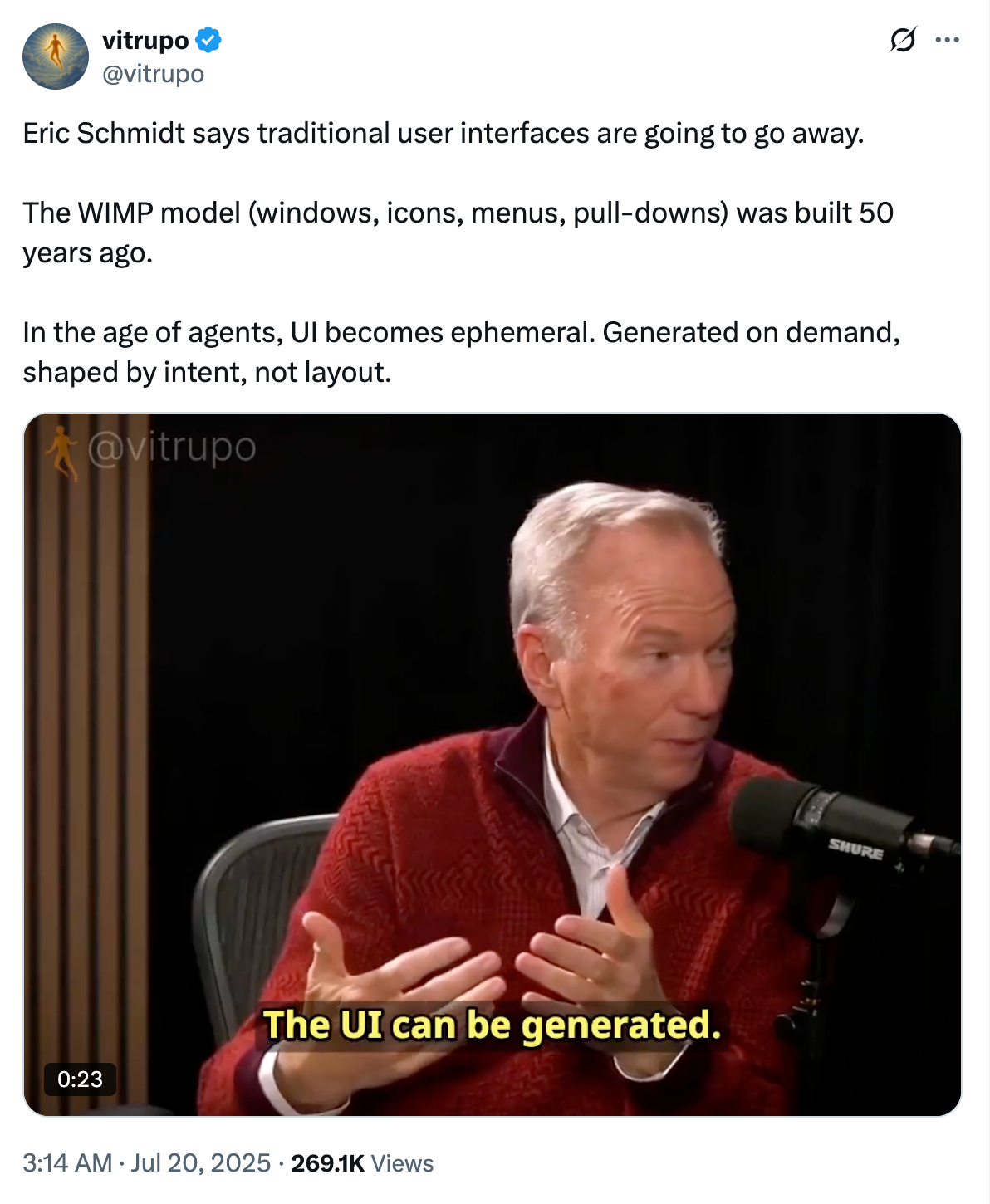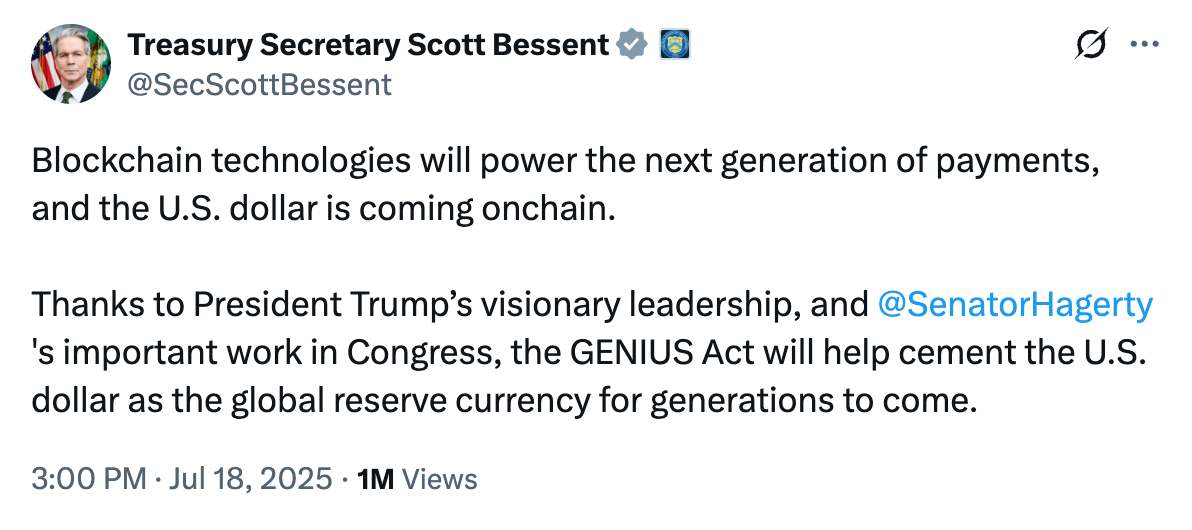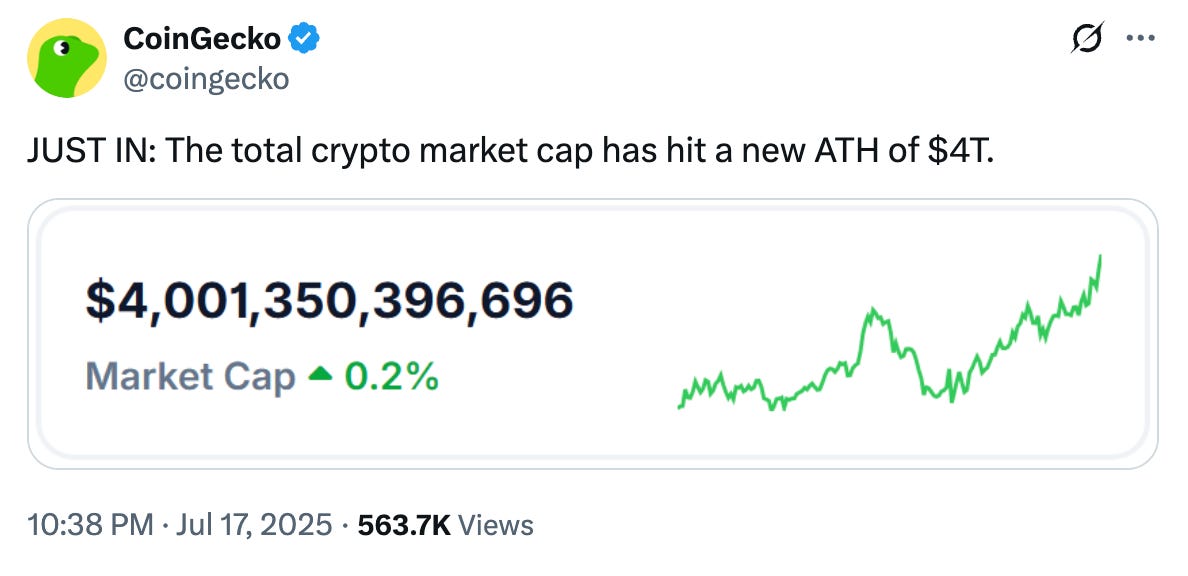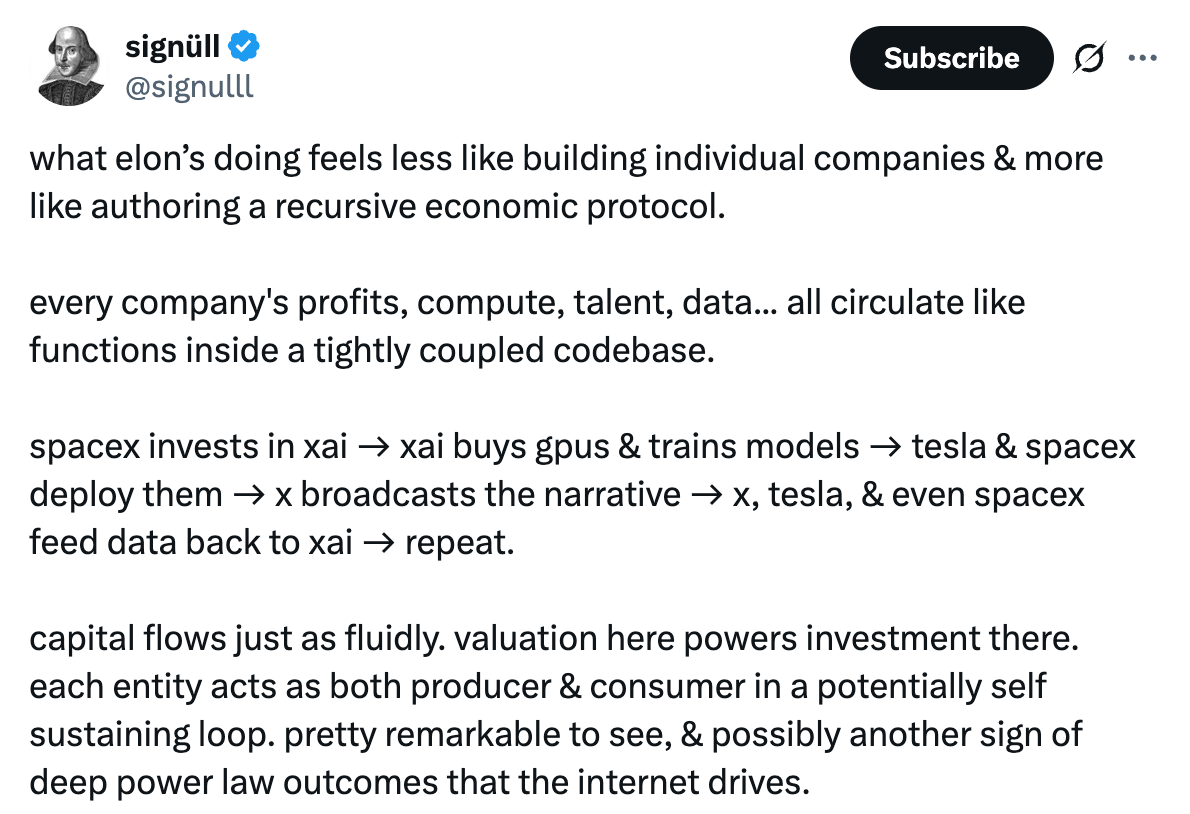What I Read This Week…
President Trump expands executive authority over federal staff, OpenAI reveals gold medal IMO results from upcoming model, Ethereum sees record ETF inflow, and cancer may be detectable 3 years earlier
Watch All-In E236
Read our Deep Dive: A Primer on the Magnificent 7 (Part 4 - Apple)
Read our Deep Dive: A Primer on Cryptocurrencies
Be the First to Build with Software Factory on September 1st
Come Join the Besties and Me at the All-In Summit September 7th-9th
Caught My Eye…
This week, President Trump signed an executive order creating Schedule G, a new classification within the federal government for certain political appointments. It addresses a longstanding gap in how the government manages policymaking positions that are expected to change with each administration. In the past, these roles often fell into a gray area. Some were held by career civil servants who remained in place across different presidencies, while others were loosely classified under categories meant for confidential staff rather than policy decision-makers. This made it difficult for incoming administrations to make staffing changes, even in positions central to shaping and executing policy. On top of that, civil service protections for career civil servants and other policy-related personnel made removals excessively slow and complicated, often leaving managers unable to hold underperforming staff accountable. Schedule G is designed to provide one component of the structure needed to cut through bureaucratic inertia in federal agencies, while also giving future presidents more leeway to bring in policy teams aligned with their agenda, ultimately ensuring that agencies respond to elected leadership.
OpenAI released ChatGPT Agent, a new capability that allows its AI system to autonomously complete complex, multi-step tasks using its own virtual computer. Unlike earlier models that responded with text alone, this agent can interact with websites, run code, access APIs, and navigate tools to carry out work end-to-end. It builds on earlier efforts like Deep Research and Operator, combining them into a unified system designed to take action as well as reason. The feature introduces new risks, particularly around prompt injection and misuse, so OpenAI has implemented permission gates, user oversight, and stronger safeguards than in any previous release. In parallel, OpenAI also announced that its experimental reasoning model achieved gold medal-level performance on this year’s International Math Olympiad, solving five of six problems under official test conditions. The model, which remains unreleased, was evaluated by former IMO medalists who graded its natural language proofs. While the results were internally verified and the proofs published for review, independent replication has not yet occurred. The IMO requires creative, multi-page proofs for problems that typically demand hours of sustained reasoning, offer no reusable templates, and resist rote techniques. By solving five of the 2025 IMO problems in plain language without tool assistance, OpenAI’s experimental model may have entered territory once limited to human mathematicians demonstrating original insight.
This week, Ethereum ETFs recorded $727 million in net inflows, marking the largest single-day inflow in the network’s history. The surge was led by BlackRock’s ETHA fund, which accounted for nearly $500 million of the total and brought institutional Ethereum holdings to over 4% of total supply. The move coincides with growing adoption of Ethereum as the base settlement layer for both stablecoins and tokenized real-world assets. That trend has been reinforced by momentum from the passage of the GENIUS and CLARITY Acts, as increased stablecoin usage drives demand for ETH to pay network fees and attracts institutional investors seeking regulatory certainty. As institutions look for exposure to yield-bearing assets and programmable financial infrastructure, Ethereum has emerged as a preferred platform for large-scale capital allocation. Its dominance in the Layer 2 ecosystem, native staking yield, composability, and settlement infrastructure that processes billions in daily transaction volume make it uniquely positioned to support tokenized money markets. Since the start of July, Ethereum’s market capitalization has grown by more than $150 billion.
Researchers have demonstrated that it is possible to detect cancer-specific DNA fragments in the bloodstream more than three years before a clinical diagnosis. The study, published in Cancer Discovery, analyzed long-stored blood plasma samples from participants in the Atherosclerosis Risk in Communities study, a decades-long project that has tracked over 15,000 people from four U.S. communities to study chronic diseases, including cancer. Using advanced whole genome sequencing techniques, the team identified tumor-derived mutations in circulating cell-free DNA at extremely low concentrations, up to 79 times lower than those found closer to the time of diagnosis. These early signals were consistent with the same genetic alterations found later when the participants were formally diagnosed with cancer. This provides evidence that with sensitive enough tools, cancers can potentially be detected years in advance, enabling significantly earlier intervention. These results help define the performance standards that future multicancer early detection tests will need to meet, including how accurately they can detect tiny traces of cancer DNA and how well they can avoid false positives.
Other Reading
Chairman Hill Commends Passage of GENIUS and CLARITY Acts (U.S. House Committee on Financial Services)
President Trump Announces $92+ Billion in AI and Energy Investments (The White House)
TSMC to Start Building Four New Plants in Taiwan (Taipei Times)
Nvidia’s China Restart Faces Production Delays of H20s (The Information)
Netflix Now Using GenAI in its Shows and Films (TechCrunch)
How the Dor Brothers Embraced AI and Stormed the Internet (NYTimes)
How YouTube Won the Battle for TV Viewers (Wall Street Journal)
DuckDuckGo Now Lets You Hide AI-Generated Images in Search Results (TechCrunch)
China's Government Wants To Hit The Brakes On EV Overinvestment (InsideEVs)
Beyond Meat on Path Towards Bankruptcy (The Food Institute)
A Comprehensive Assessment of America's Infrastructure 2025 (ASCE)
On X…










Thank you for the important and timely topics with insight.
Thoughts https://torrancestephensphd.substack.com/p/the-joke-is-on-us-pregnancy-risk